Foreword / YouTube Video Review
The review on this website is a brief overview and summary of the objective performance of this speaker. It is not intended to be a deep dive. Moreso, this is information for those who prefer “just the facts” and prefer to have the data without the filler. Discussion about the data and my subjective thoughts can be found in my video below.
For a primer on what the data means, please watch my series of videos where I provide in-depth discussion and examples of how to read the graphics presented hereon.
Information and Photos
Note: ELAC loaned me this speaker to test. I was not paid for this review nor has ELAC seen this review before publication.
The ELAC UBR62 is a 3-way bookshelf speaker featuring a 6.5-inch midwoofer, 4-inch concentric with 1-inch dome tweeter placed coaxially.
MSRP for a pair of the UBR62 speakers is currently $999 USD.
CTA-2034 (SPINORAMA) and Accompanying Data
All data collected using Klippel’s Near-Field Scanner. The Near-Field-Scanner 3D (NFS) offers a fully automated acoustic measurement of direct sound radiated from the source under test. The radiated sound is determined in any desired distance and angle in the 3D space outside the scanning surface. Directivity, sound power, SPL response and many more key figures are obtained for any kind of loudspeaker and audio system in near field applications (e.g. studio monitors, mobile devices) as well as far field applications (e.g. professional audio systems). Utilizing a minimum of measurement points, a comprehensive data set is generated containing the loudspeaker’s high resolution, free field sound radiation in the near and far field. For a detailed explanation of how the NFS works and the science behind it, please watch the below discussion with designer Christian Bellmann:
The reference plane in this test is at the tweeter.
Measurements are provided in a format in accordance with the Standard Method of Measurement for In-Home Loudspeakers (ANSI/CTA-2034-A R-2020). For more information, please see this link.
CTA-2034 / SPINORAMA:
The On-axis Frequency Response (0°) is the universal starting point and in many situations, it is a fair representation of the first sound to arrive at a listener’s ears.
The Listening Window is a spatial average of the nine amplitude responses in the ±10º vertical and ±30º horizontal angular range. This encompasses those listeners who sit within a typical home theater audience, as well as those who disregard the normal rules when listening alone.
The Early Reflections curve is an estimate of all single-bounce, first-reflections, in a typical listening room.
Sound Power represents all the sounds arriving at the listening position after any number of reflections from any direction. It is the weighted rms average of all 70 measurements, with individual measurements weighted according to the portion of the spherical surface that they represent.
Sound Power Directivity Index (SPDI): In this standard the SPDI is defined as the difference between the listening window curve and the sound power curve.
Early Reflections Directivity Index (EPDI): is defined as the difference between the listening window curve and the early reflections curve. In small rooms, early reflections figure prominently in what is measured and heard in the room so this curve may provide insights into potential sound quality.
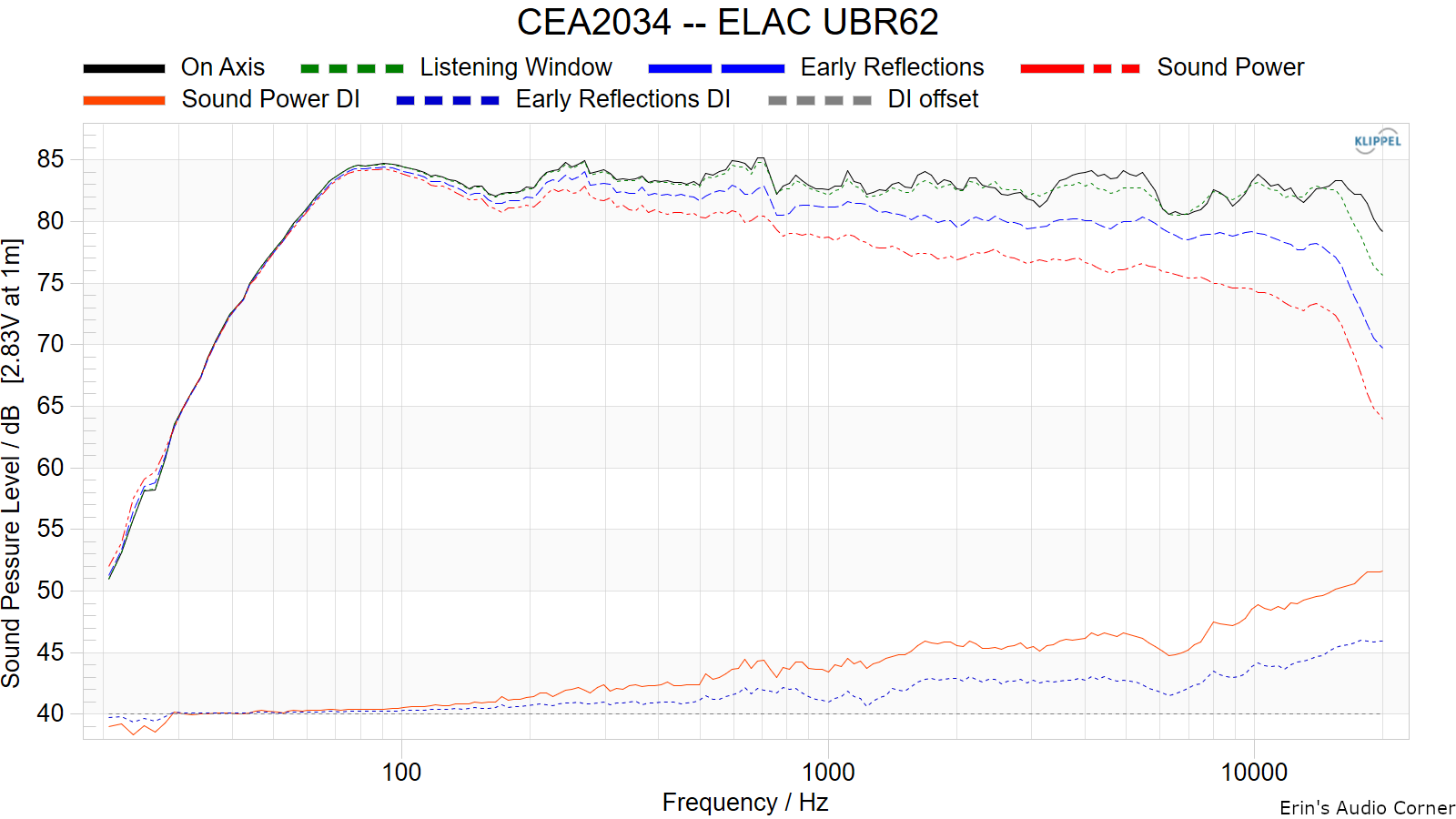
Early Reflections Breakout:
Floor bounce: average of 20º, 30º, 40º down
Ceiling bounce: average of 40º, 50º, 60º up
Front wall bounce: average of 0º, ± 10º, ± 20º, ± 30º horizontal
Side wall bounces: average of ± 40º, ± 50º, ± 60º, ± 70º, ± 80º horizontal
Rear wall bounces: average of 180º, ± 90º horizontal
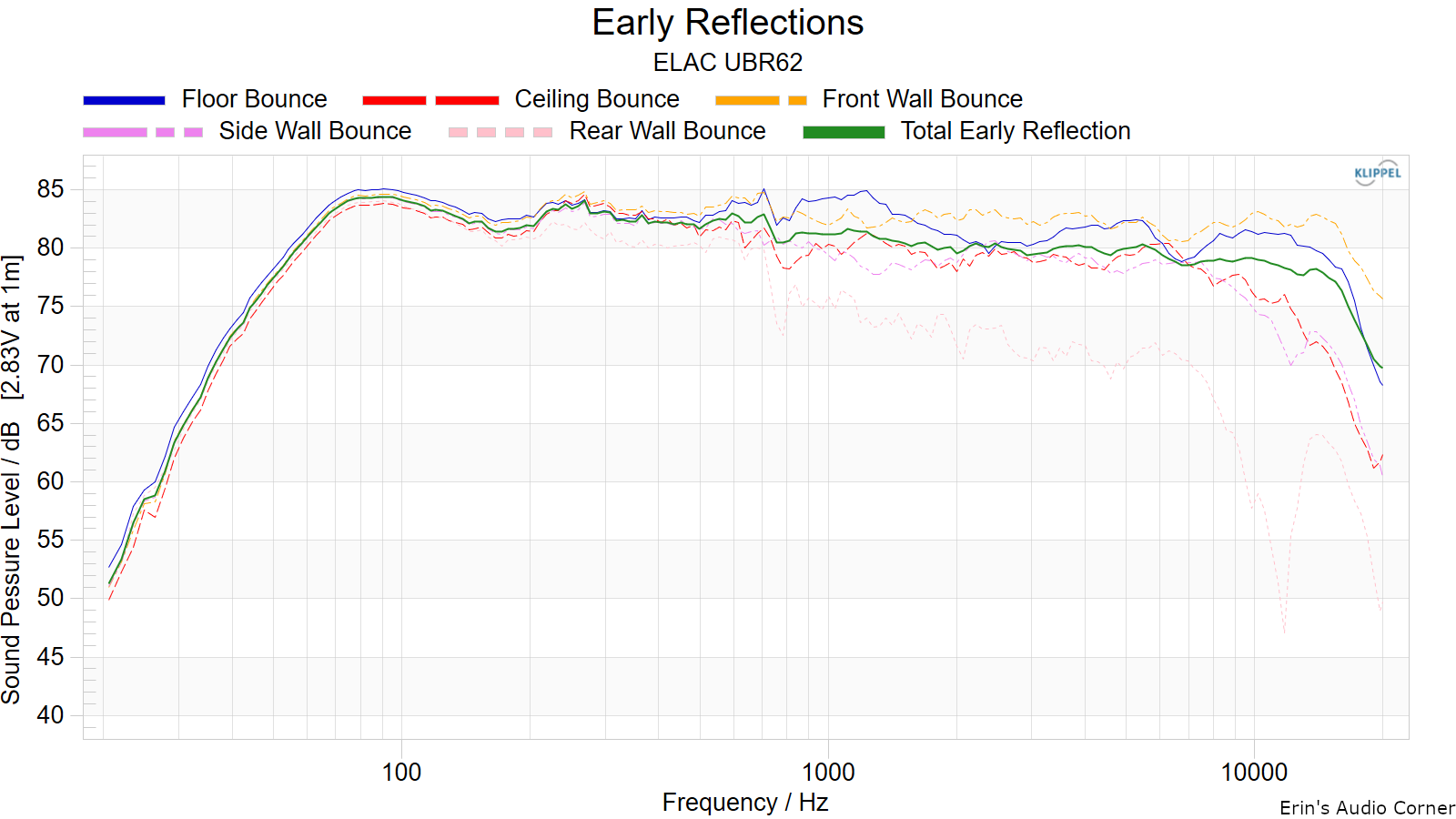
Estimated In-Room Response:
In theory, with complete 360-degree anechoic data on a loudspeaker and sufficient acoustical and geometrical data on the listening room and its layout it would be possible to estimate with good precision what would be measured by an omnidirectional microphone located in the listening area of that room. By making some simplifying assumptions about the listening space, the data set described above permits a usefully accurate preview of how a given loudspeaker might perform in a typical domestic listening room. Obviously, there are no guarantees because individual rooms can be acoustically aberrant. Sometimes rooms are excessively reflective (“live”) as happens in certain hot, humid climates, with certain styles of interior décor and in under-furnished rooms. Sometimes rooms are excessively “dead” as in other styles of décor and in some custom home theaters where acoustical treatment has been used excessively. This form of post processing is offered only as an estimate of what might happen in a domestic living space with carpet on the floor and a “normal” amount of seating, drapes, and cabinetry.
For these limited circumstances it has been found that a usefully accurate Predicted In-Room (PIR) amplitude response, also known as a “room curve” is obtained by a weighted average consisting of 12 % listening window, 44 % early reflections and 44 % sound power. At very high frequencies errors can creep in because of excessive absorption, microphone directivity, and room geometry. These discrepancies are not considered to be of great importance.

Horizontal Frequency Response (0° to ±90°):

Vertical Frequency Response (0° to ±40°):
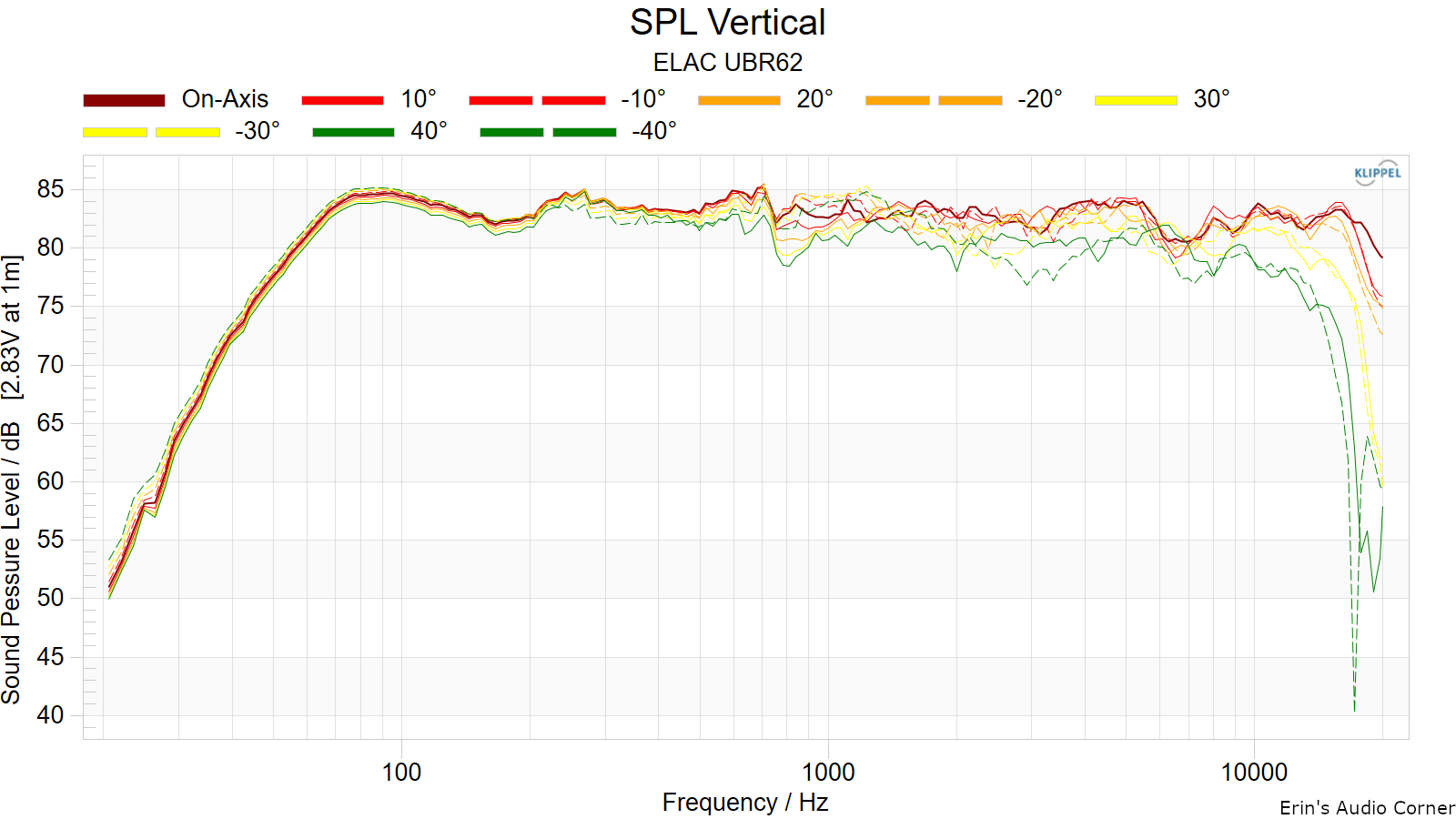
Horizontal Contour Plot (not normalized):
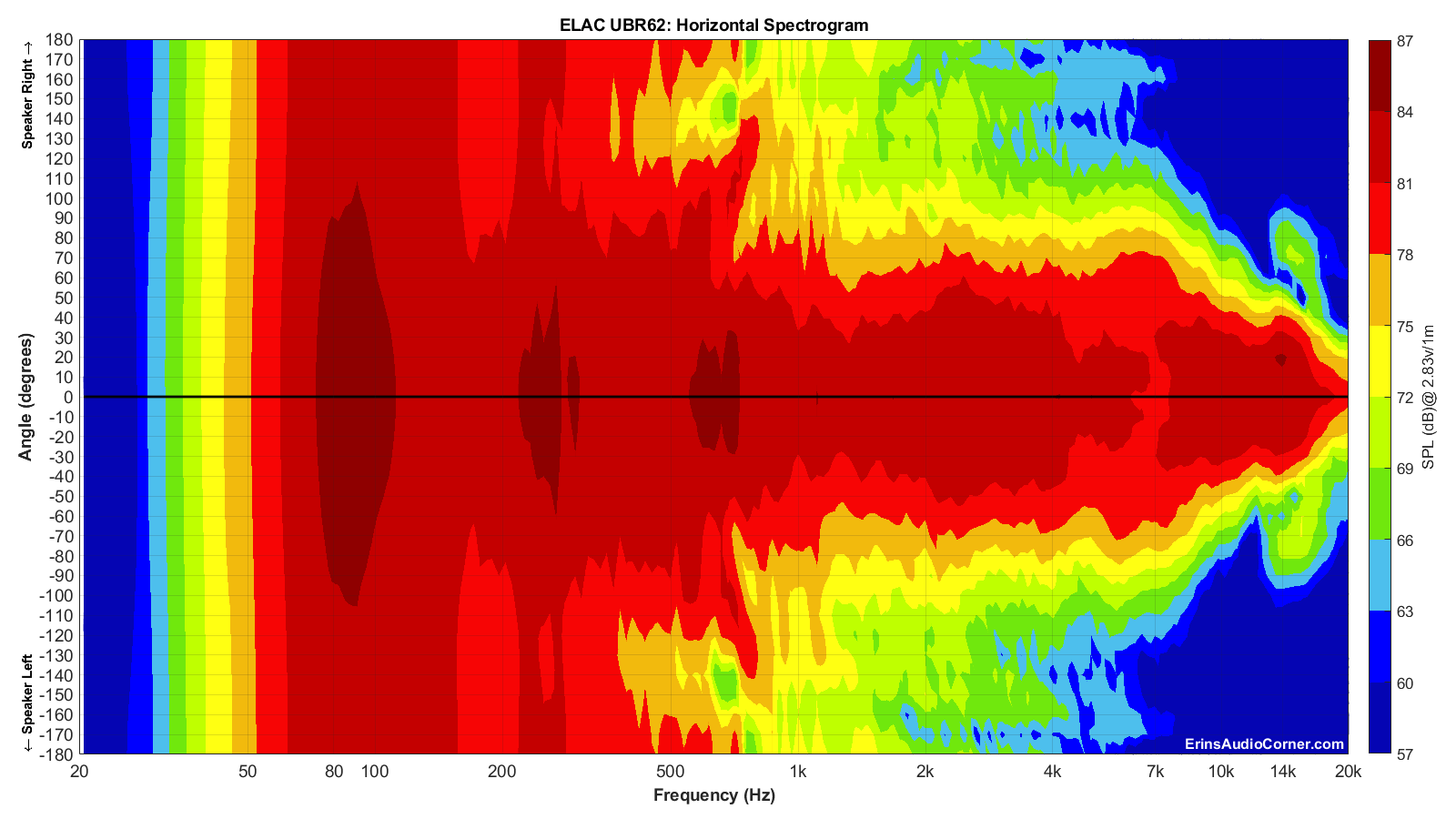
Horizontal Contour Plot (normalized):
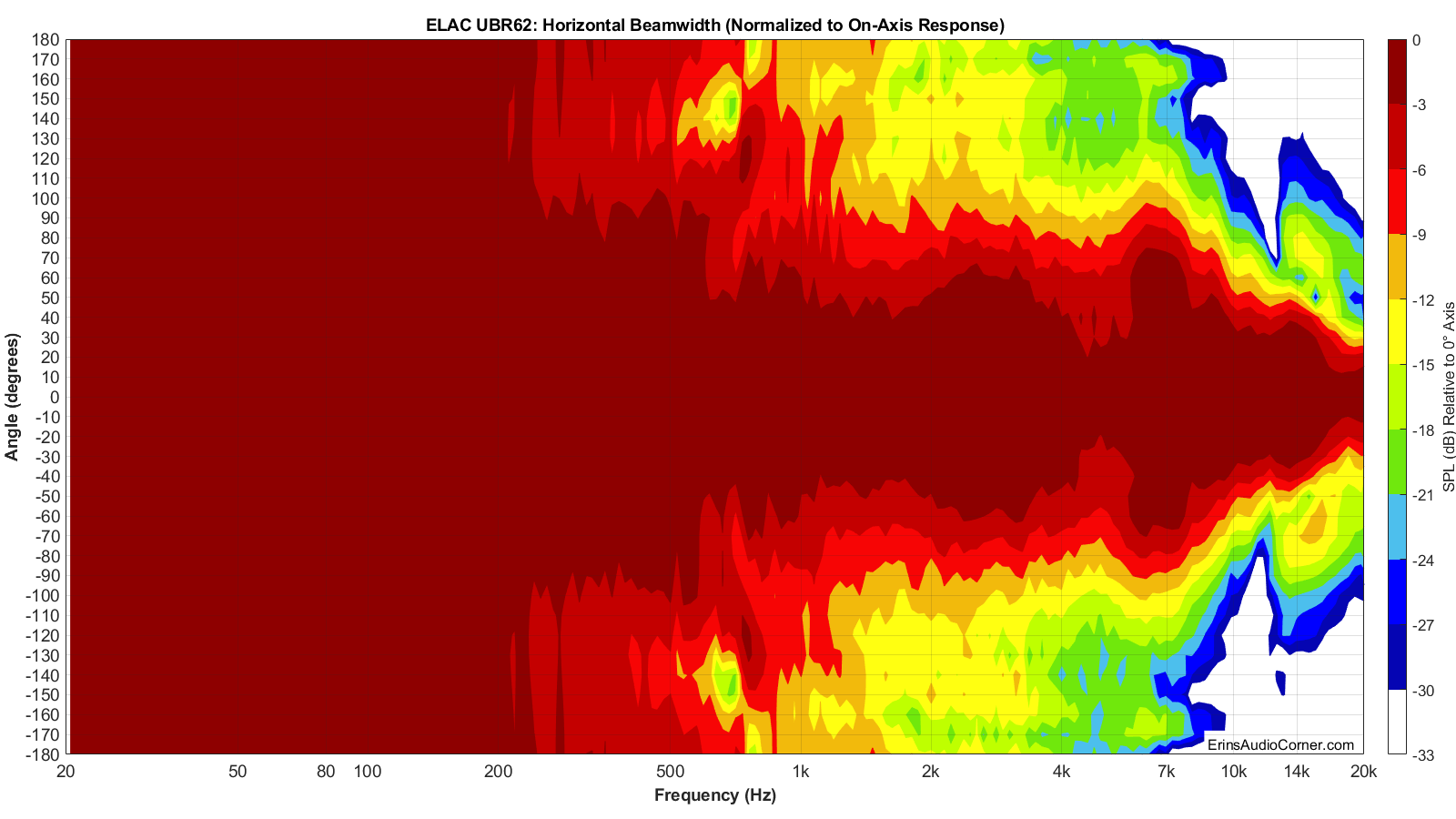
Vertical Contour Plot (not normalized):
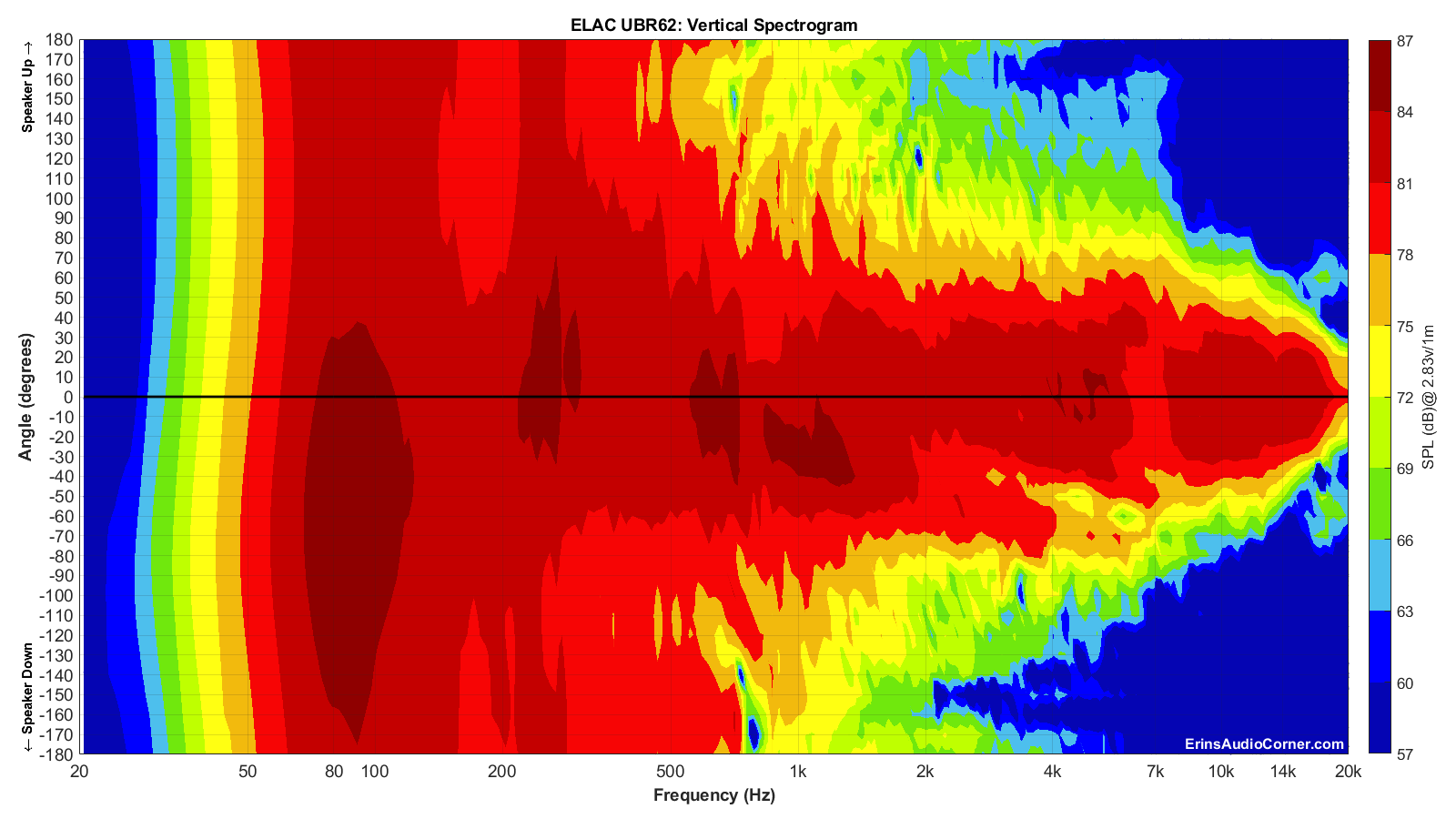
Vertical Contour Plot (normalized):
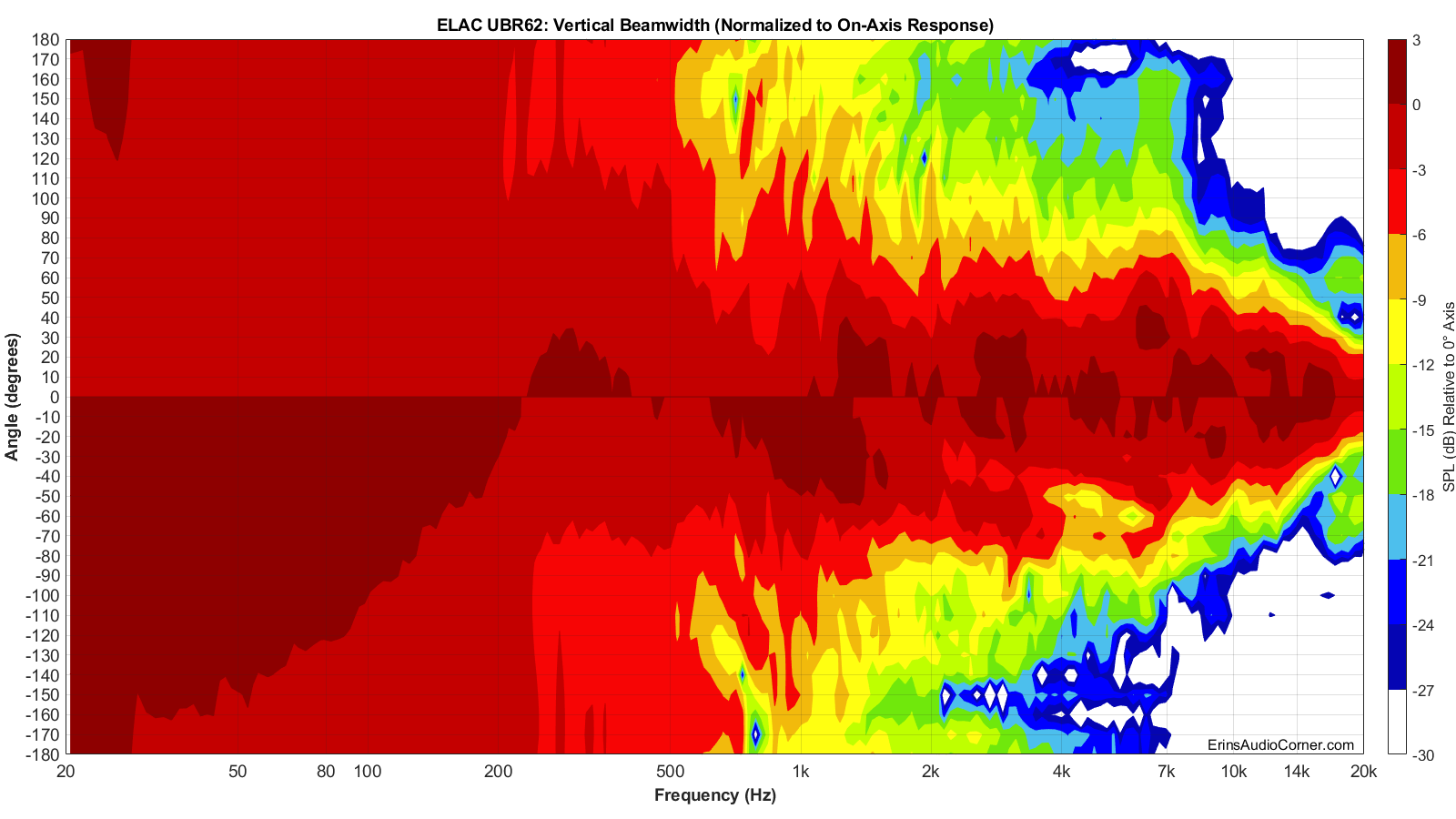
Additional Measurements
Impedance Magnitude and Phase + Equivalent Peak Dissipation Resistance (EPDR)
For those who do not know what EPDR is (ahem, me until 2020), Keith Howard came up with this metric which he defined in a 2007 article for Stereophile as:
… simply the resistive load that would give rise to the same peak device dissipation as the speaker itself.
A note from Dr. Jack Oclee-Brown of Kef (who supplied the formula for calculating EPDR):
Just a note of caution that the EPDR derivation is based on a class-B output stage so it’s valid for typical class-AB amps but certainly not for class-A and probably has only marginal relevance for class-D amps (would love to hear from a class-D expert on this topic).
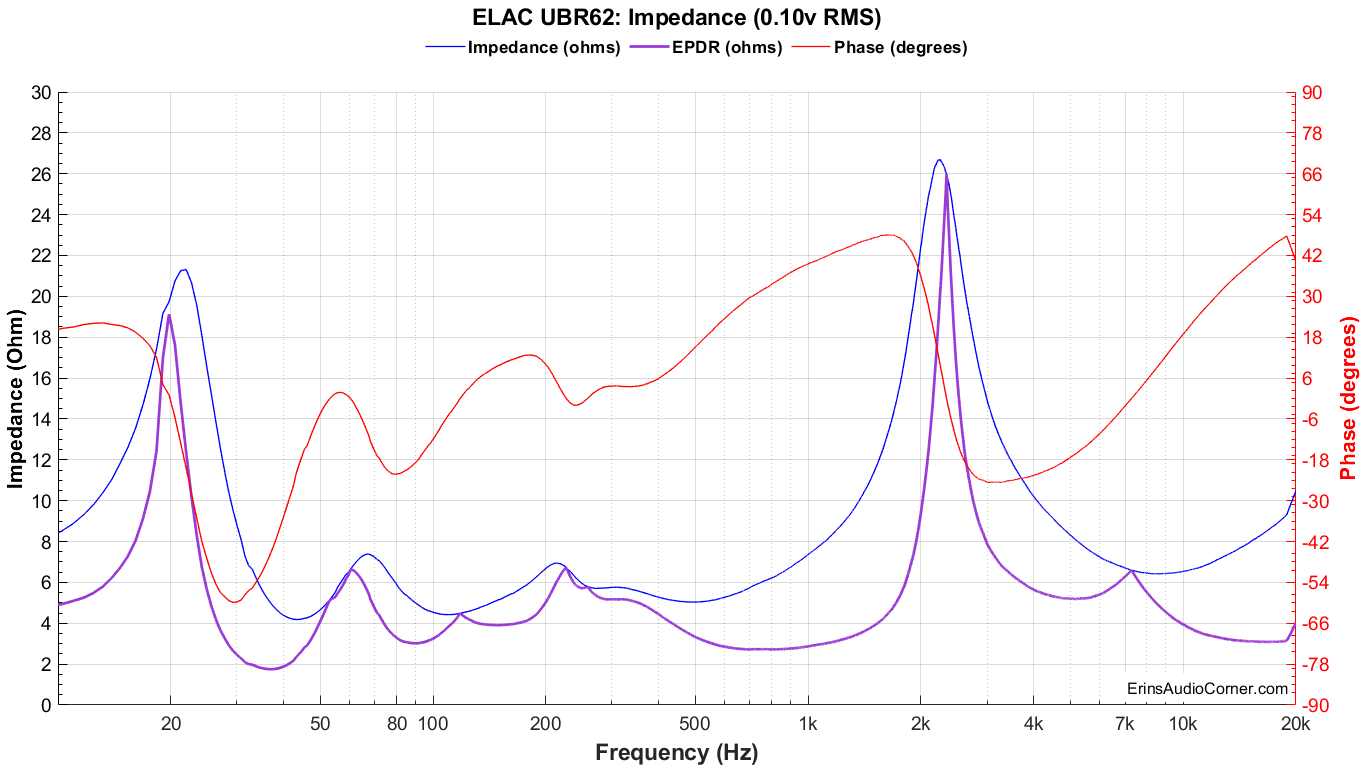
And for those who are curious what happens when you apply more voltage, below is a comparison of the EPDR between 0.10vRMS input and 2.83vRMS input.
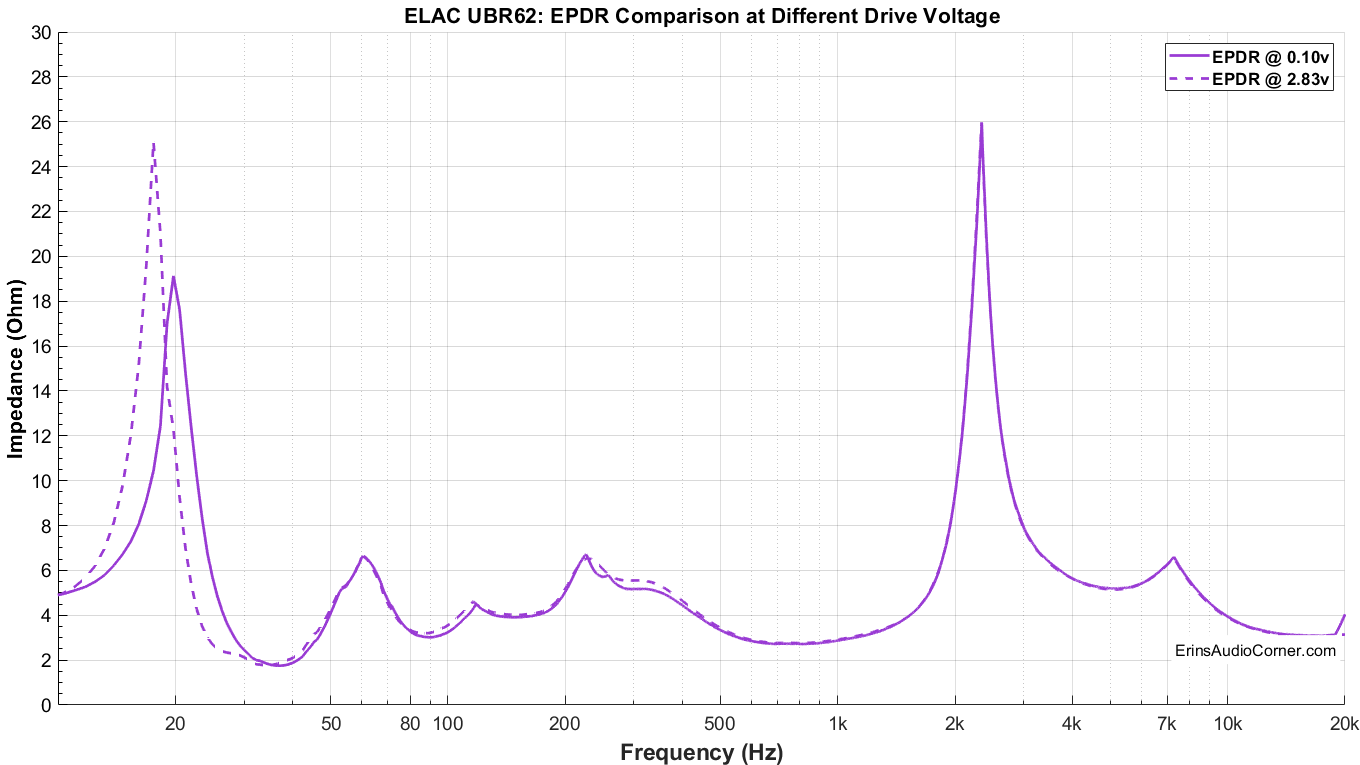
On-Axis Response Linearity
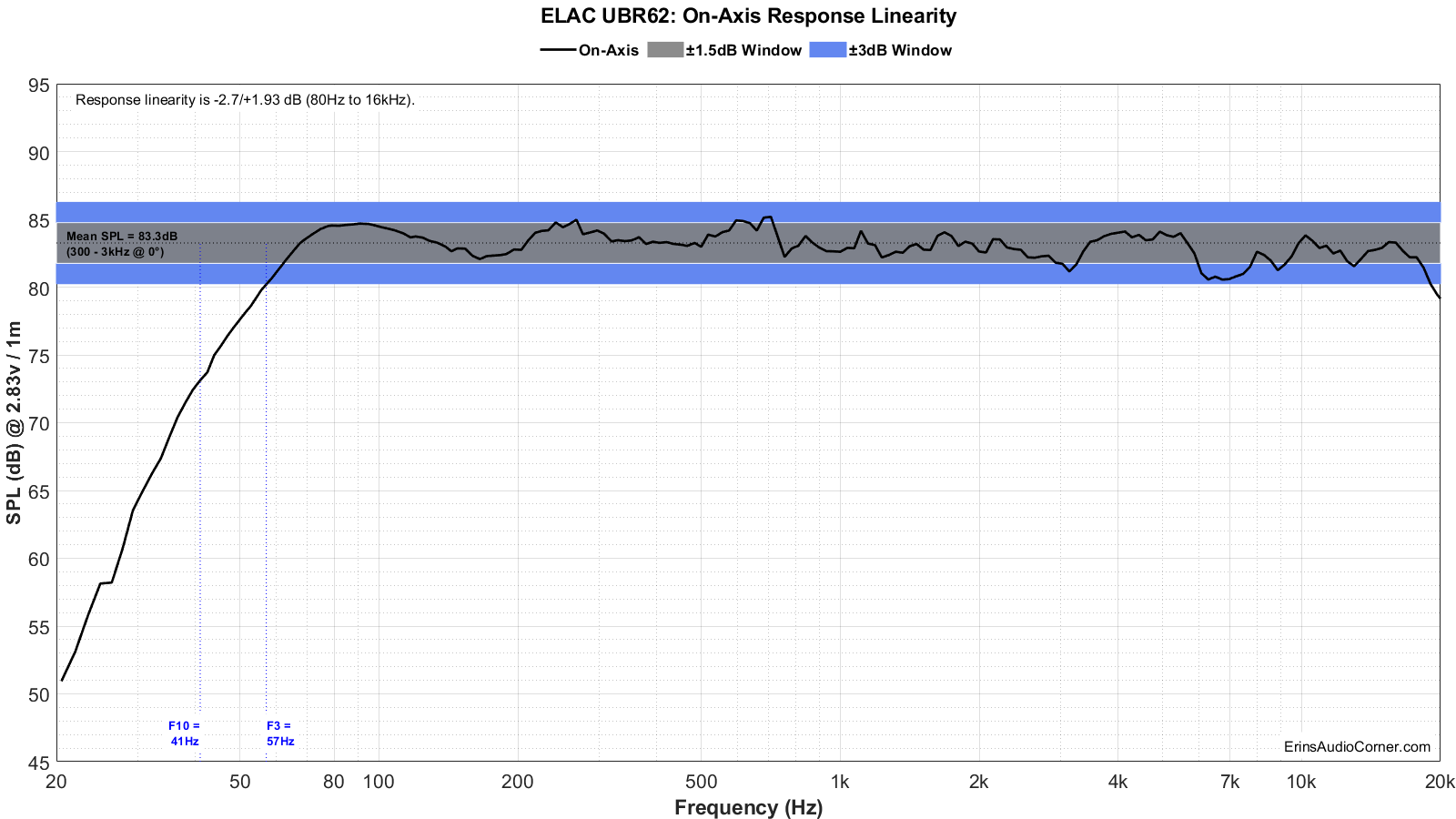
Near-Field Response
Nearfield response of individual drive units:
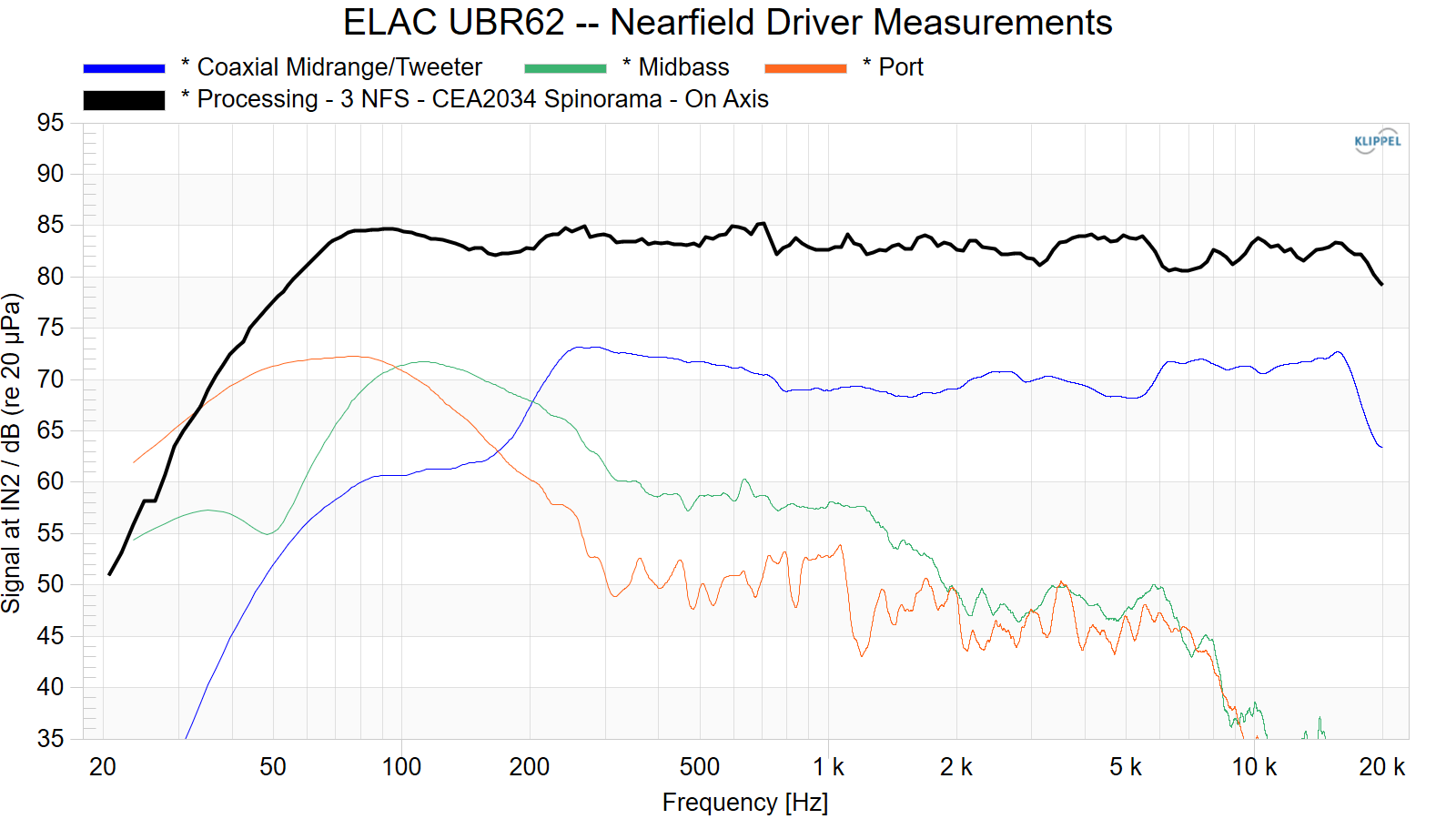
“Globe” Plots
These plots are generated from exporting the Klippel data to text files. I then process that data with my own MATLAB script to provide what you see. These are not part of any software packages and are unique to my tests.
Horizontal Polar (Globe) Plot:
This represents the sound field at 2 meters - above 200Hz - per the legend in the upper left.
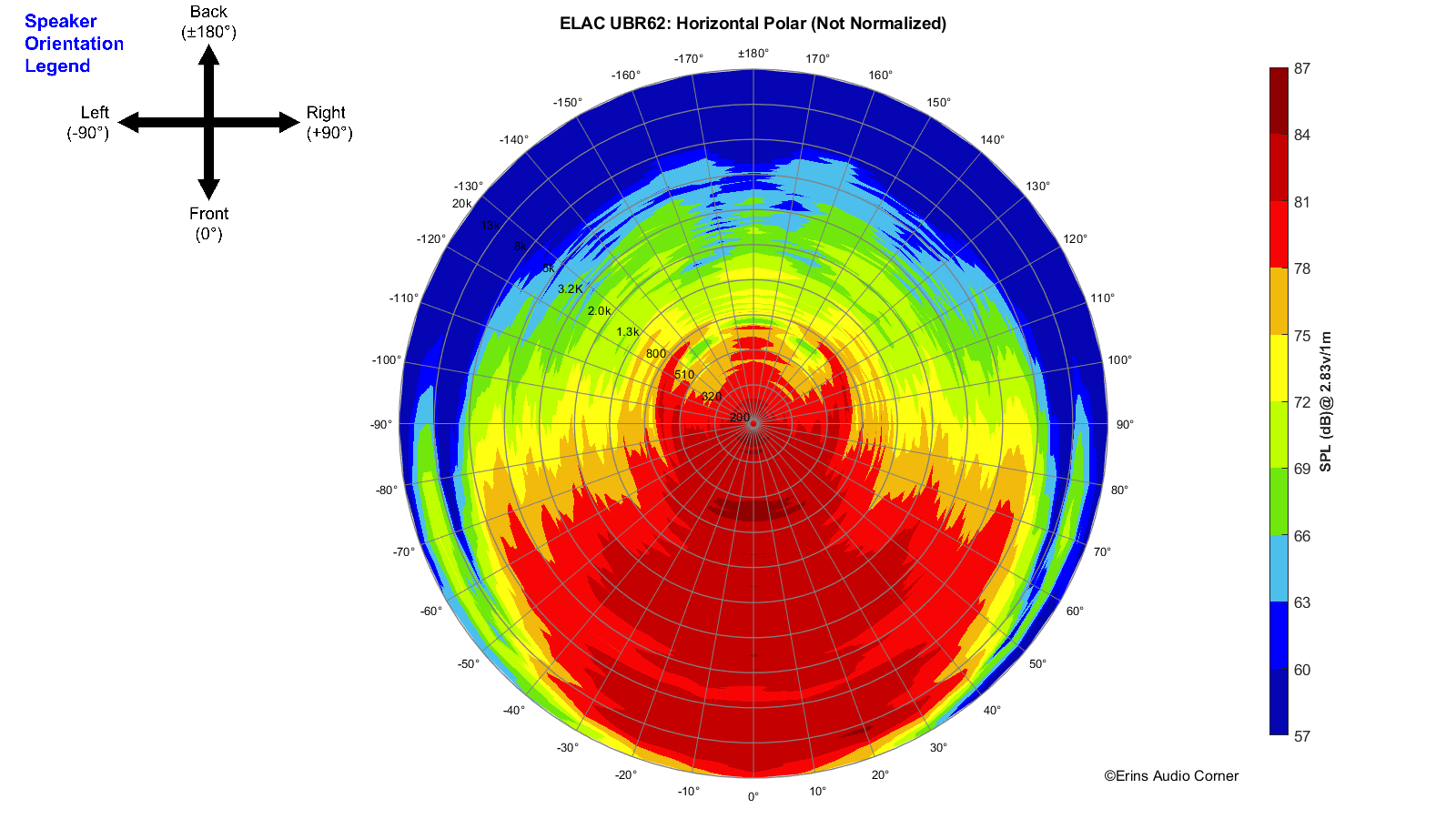
Vertical Polar (Globe) Plot:
This represents the sound field at 2 meters - above 200Hz - per the legend in the upper left.

Harmonic Distortion
Harmonic Distortion at 86dB @ 1m:

Harmonic Distortion at 96dB @ 1m:
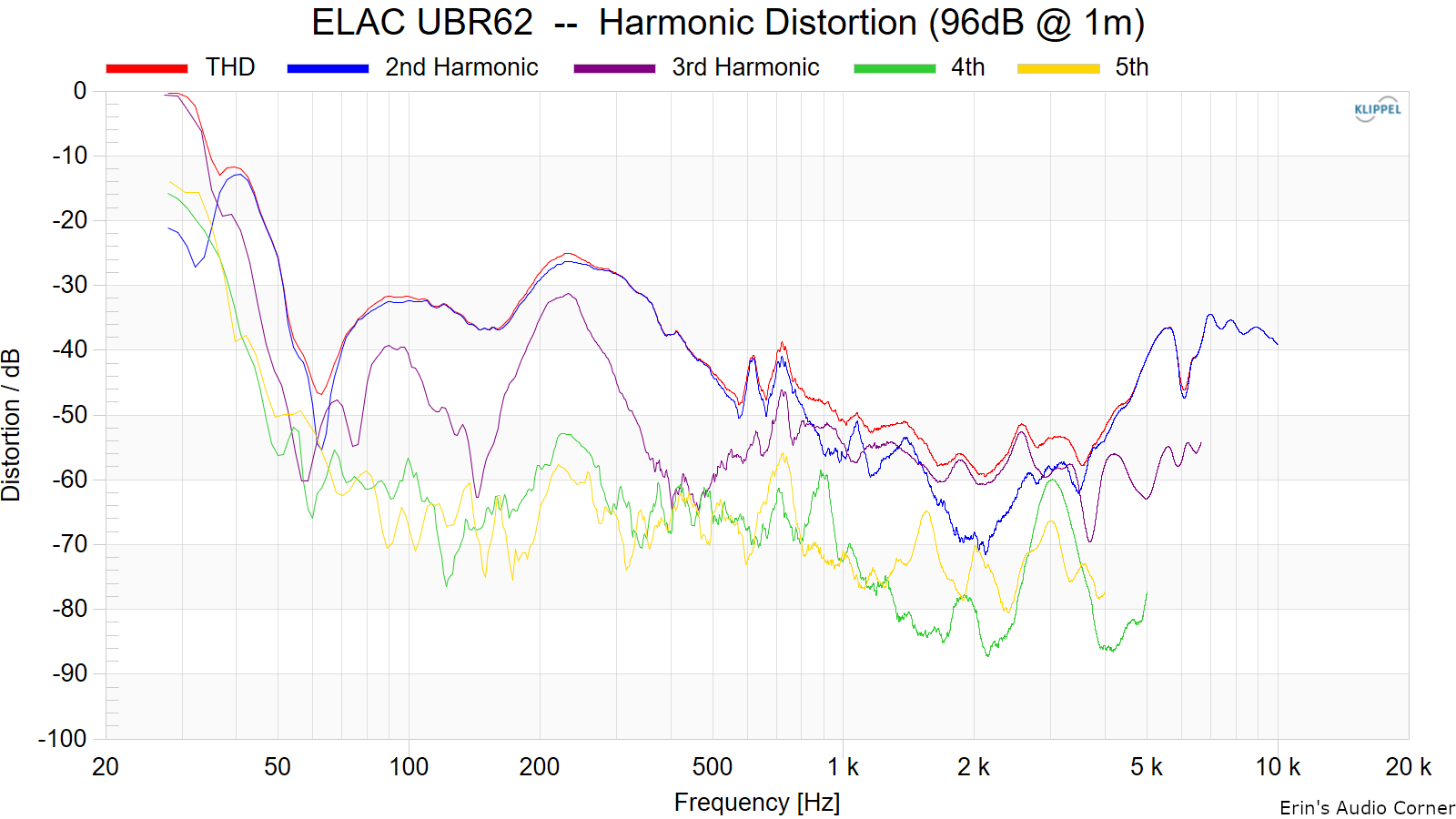
Dynamic Range (Instantaneous Compression Test)
The below graphic indicates just how much SPL is lost (compression) or gained (enhancement; usually due to distortion) when the speaker is played at higher output volumes instantly via a 2.7 second logarithmic sine sweep referenced to 76dB at 1 meter. The signals are played consecutively without any additional stimulus applied. Then normalized against the 76dB result.
The tests are conducted in this fashion:
- 76dB at 1 meter (baseline; black)
- 86dB at 1 meter (red)
- 96dB at 1 meter (blue)
- 102dB at 1 meter (purple)
The purpose of this test is to illustrate how much (if at all) the output changes as a speaker’s components temperature increases (i.e., voice coils, crossover components) instantaneously.

Long Term Compression Tests
The below graphics indicate how much SPL is lost or gained in the long-term as a speaker plays at the same output level for 2 minutes, in intervals. Each graphic represents a different SPL: 86dB and 96dB both at 1 meter.
The purpose of this test is to illustrate how much (if at all) the output changes as a speaker’s components temperature increases (i.e., voice coils, crossover components).
The tests are conducted in this fashion:
- “Cold” logarithmic sine sweep (no stimulus applied beforehand)
- Multitone stimulus played at desired SPL/distance for 2 minutes; intended to represent music signal
- Interim logarithmic sine sweep (no stimulus applied beforehand) (Red in graphic)
- Multitone stimulus played at desired SPL/distance for 2 minutes; intended to represent music signal
- Final logarithmic sine sweep (no stimulus applied beforehand) (Blue in graphic)
The red and blue lines represent changes in the output compared to the initial “cold” test.

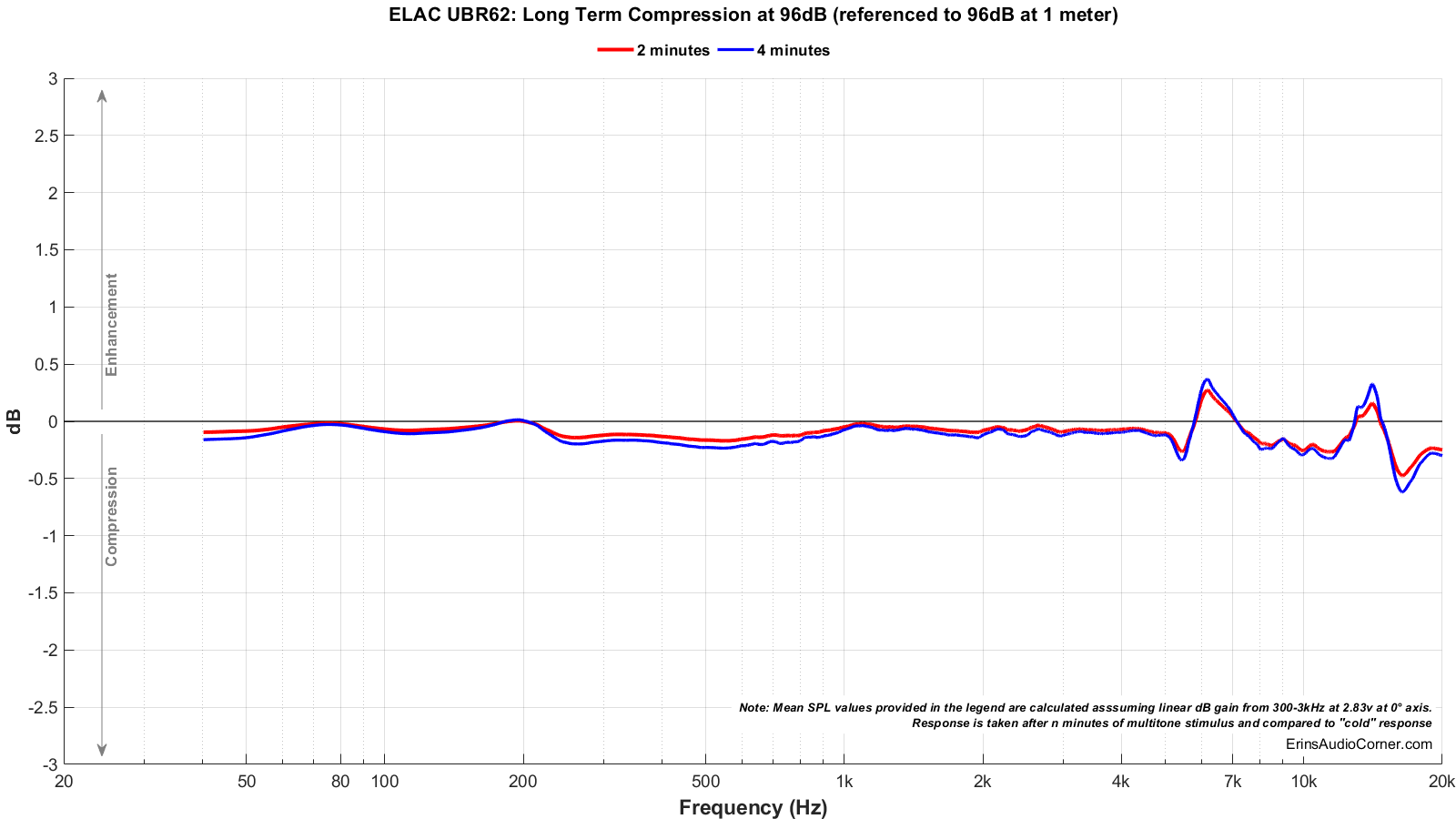
Parting / Random Thoughts
If you want to see the music I use for evaluating speakers subjectively, see my Spotify playlist.
- Subjective listening was mainly in the farfield at 3-4 meters in an open floorplan living room. Subjective listening was conducted at 80-95dB at these distances and occasionally higher. Higher volumes were done simply to test the output capability in case one wants to try to sit further away.
- I used both a Parasound NewClassic 200 Integrated as well as their HINT 6 integrated for my tests. I found quickly that I the 110w on the 200 wasn’t sufficient to really “go big” on these speakers, given their lower sensitivity. The additional power of the H-INT6 was needed to provide adequate volume for my listening tests.
- The impedance hovers mostly around/above 5 Ohms, dipping only to 4 Ohms at about 50Hz (where one is most likely to not be playing this speaker and instead using a subwoofer to take care of this region).
- For a coincident/coaxial speaker, the dispersion is rather wide. And I liked that. If you follow my reviews enough you know I like a wide soundstage and that is typically related directly to the radiation pattern of the speaker. I attribute this to the rather shallow cone profile of the midrange relative to other coaxial speakers I have tested.
- Similarly, notice the on-axis response is a bit slanted downward. Now, look at the estimated in-room response. Notice how the estimated in room response has an excellent downward linearity to it? In my experience, if the on-axis response of this speaker were actually flat the in-room response would be a bit flat in the tweeter region, making the overall sound to present itself as a bit “bright” or “treble heavy” at the listening position. In other words, wide radiation speakers reflect more energy back to the listening position so - in my opinion - the design response was purposely tilted downward so that the response at the seated position would result in an overall sloping response rather than a response that has a “knee”.
- On-axis listening for most coaxial designs is typically the worst location to listen within. These speakers are best listened to slightly toed in or out (depending on how much room interaction you want) by about 10°.
- My listening tests revealed a bit of resonance in the upper female vocal. I couldn’t pin down what this was and I can’t find an explicit area in the data. However, knowing the fundamental female vocal range is primarily between 200Hz to 1kHz, looking at the data I see a mild but broad bump from 500-700Hz and I wonder if that might have had something to do with what I was hearing. I can’t be sure. This is purely speculation as I didn’t have the means to test this with EQ in the configuration I was using.
- With the low sensitivity of about 83dB @ 2.83v/1m, these will need some power to get to higher output levels. But also consider what the dynamic compression tests indicate; that there is compression going above 96dB. Realistically, this would be expected of a small, lower sensitivity speaker. And one would also use a subwoofer to help alleviate the bass driver of trying to overextend itself.
- The dip in upper midbass around 150Hz is bothersome when looking at the data. I can say that when listening, however, it didn’t seem to be a problem. BUT, I also have floor and ceiling cancellation an octave above that so the dip didn’t stand out as it was also followed by a broader dip. Obviously this means your mileage will vary as this is below the schroeder frequency where the room dominates the sound. The good news, however, is the speaker is resonance-free in this region.
Overall, the sound from this speaker was pleasing and I am impressed at how the in-room response was targeted to provide both a wide soundstage without too much high frequency content; a balancing act for sure. I would have preferred lower bass extension and higher sensitivity as those two are limiting factors for higher output listening in the farfield. The magic of this speaker, though, is the soundstage. In my opinion, this is a good option for someone who fancies having a more 3-dimensional soundstage with great soundstage depth and is willing to sacrifice bass extension and output.
As stated in the Foreword, this written review is purposely a cliff’s notes version. For more details about the performance (objectively and subjectively) please watch the YouTube video.
Support the Cause
If you like what you see here and want to help support the cause there are a few ways you can do so:
- Join my Patreon here.
- Contribute via PayPal here.
- Purchase via Crutchfield affiliate link here as it helps me gain a small commission at no additional cost to you.
Your support helps me pay for new items to test, hardware, miscellaneous items and costs of the site’s server space and bandwidth. All of which I otherwise pay out of pocket. So, if you can help chip in a few bucks, know that it is very much appreciated.
You can also join my Facebook and YouTube pages if you’d like to follow along with updates.